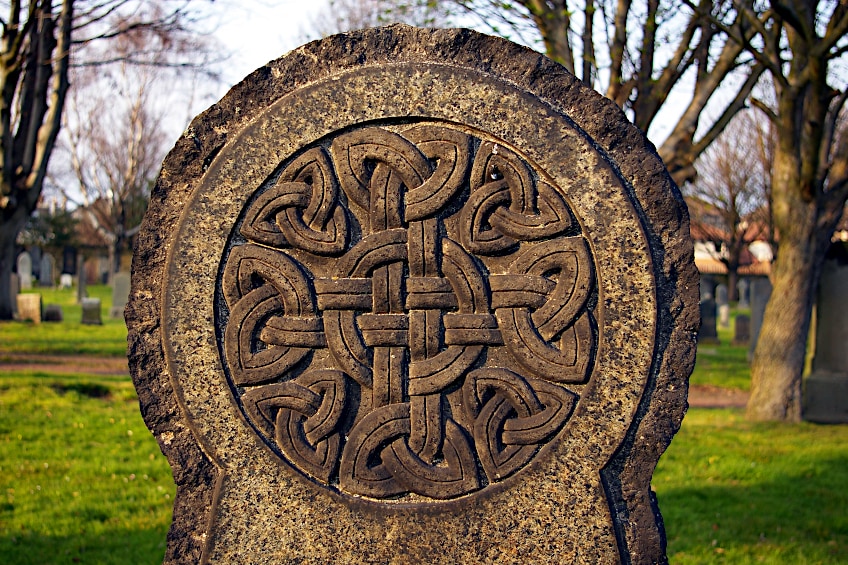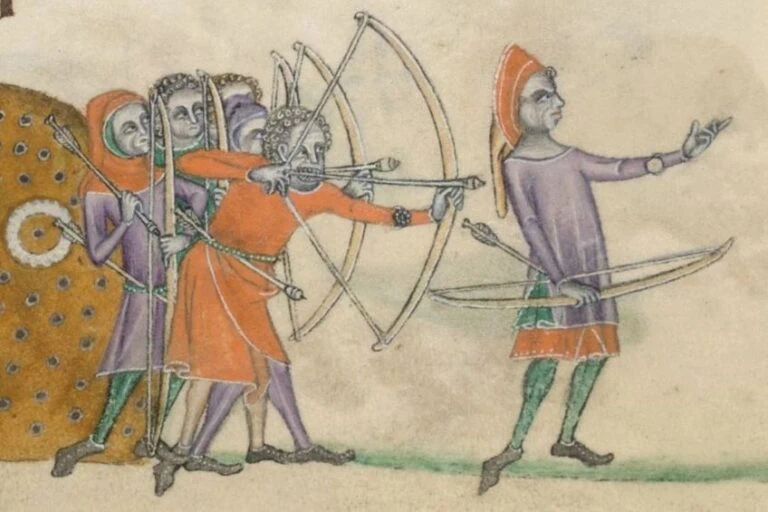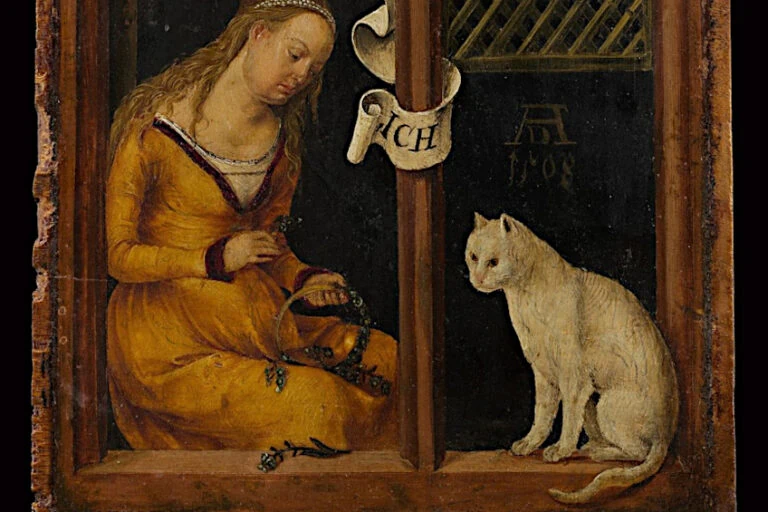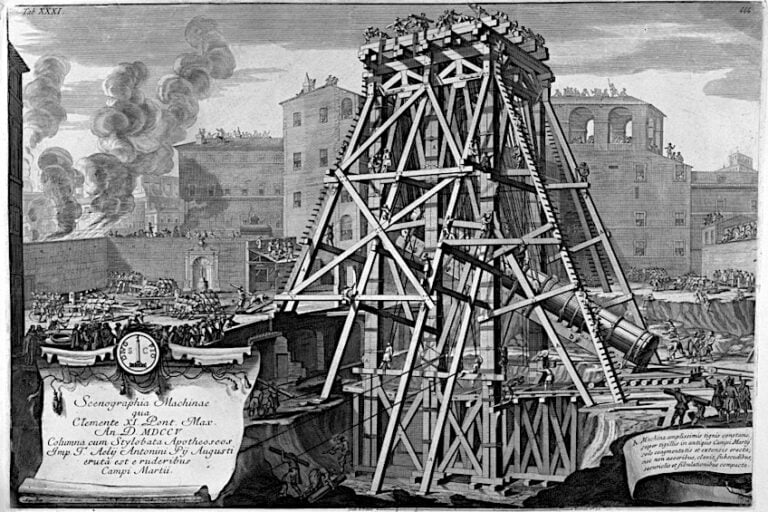Celtic Knot – History and Meaning of the Celtic Knot Symbol
The popularization of cultural symbols in modern society has been both celebrated and frowned upon in recent years. Whether you like it or are against the concept as a whole, the fact remains that certain cultural religious icons have entered mainstream popular culture and don’t seem to be going anywhere anytime soon. Some of the most popular of these icons are the triquetra and the Celtic knot. Virtually every tattoo parlor and Pinterest feed is chocked full of versions of the latter, but have you asked yourself exactly what the Celtic knot is? Let’s have a look at what the Celtic knot is, where it comes from, what it means, where you can find them, and the different types of Celtic knots you could come across.
Contents
- 1 What Is the Celtic Knot?
- 2 Celtic Knot Designs and Iterations
- 3 What is the Meaning of the Celtic Knot?
- 4 Where Can the Celtic Knot Be Found Today?
- 5 Frequently Asked Questions
What Is the Celtic Knot?
The “Celtic knot” refers to a design style characterized by interlaced visual representations of knots, typically on the surface of a workpiece or artwork. The style had become synonymous with decorations found in Christian literature, artwork, and monuments found in the 8th century. The knots represented on the aforementioned surfaces are often endless, not unlike the ouroboros symbol found in other cultures.
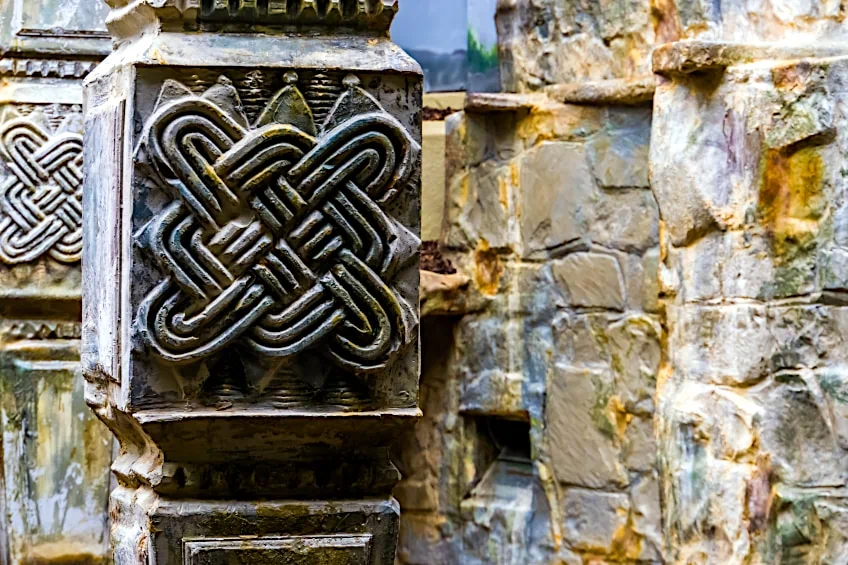 Celtic knot designs on columns
Celtic knot designs on columns
This style of interlinking knots first appeared back in the 4th century in Roman artworks, but it has also been noted to appear in various other cultural-religious works around the world, including but not limited to Byzantine architecture, Islamic art, Ethiopian art, and even Coptic artworks. The design varies considerably from culture to culture, although the “endless” nature tends to stay consistent throughout.
There are various preludes to the Celtic knot that clearly influenced the final design we have today. Key patterns, ropes, and spirals were pretty commonplace in Celtic culture before the influence of Christian design brought about the final design that would be used from that point forward. The earliest example of the Celtic knot known today is on the page fragment of a Gospel book, which can now be found in the Durham Cathedral library.
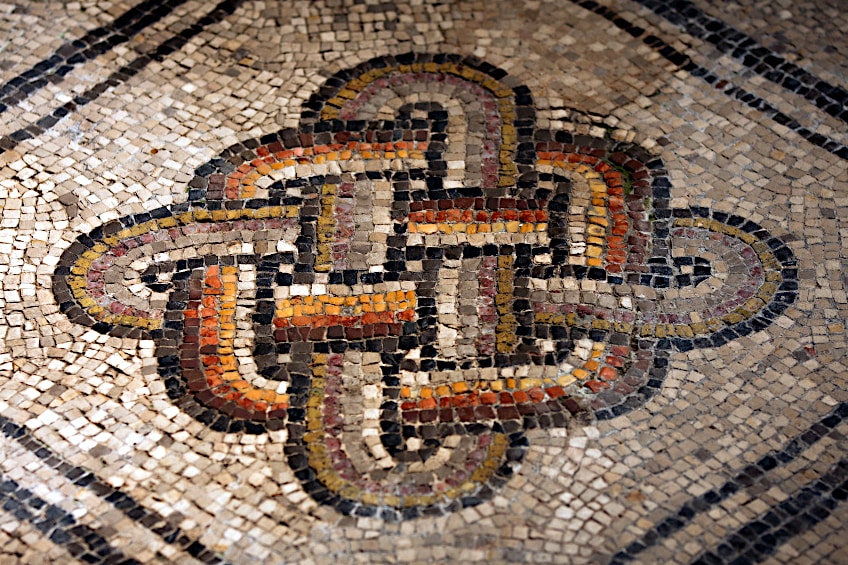 Ancient Byzantine mosaic knotwork design
Ancient Byzantine mosaic knotwork design
As we mentioned previously this design was alive in some form or another all over the world, even though it is commonly associated with Celtic, Irish, and Welsh cultures today. According to recent findings, the closed knot design was developed as a result of similar broken plait patterns from Italy and Gaul making their way down to England and Ireland thanks to trade and travel.
In essence then, the Celtic knot is a symbol that, depending on the specific design, is meant to represent the never-ending nature of the human soul and the protection of the divine. This is illustrated by its closed loop design, forcing all lines to flow back into one another, repeating the pattern forever.
Celtic Knot Designs and Iterations
There are loads of tattoos, jewelry, and even clothing designs that incorporate the Celtic knot into their design. While these all tend to look really cool, there is a meaning to each type of Celtic knot that is often overlooked by designers. In total, there are around eight primary variations of the Celtic knot, each with its own unique design and meaning. This being said, let’s have a look at each of these variations, their characteristics, and their overall meaning.
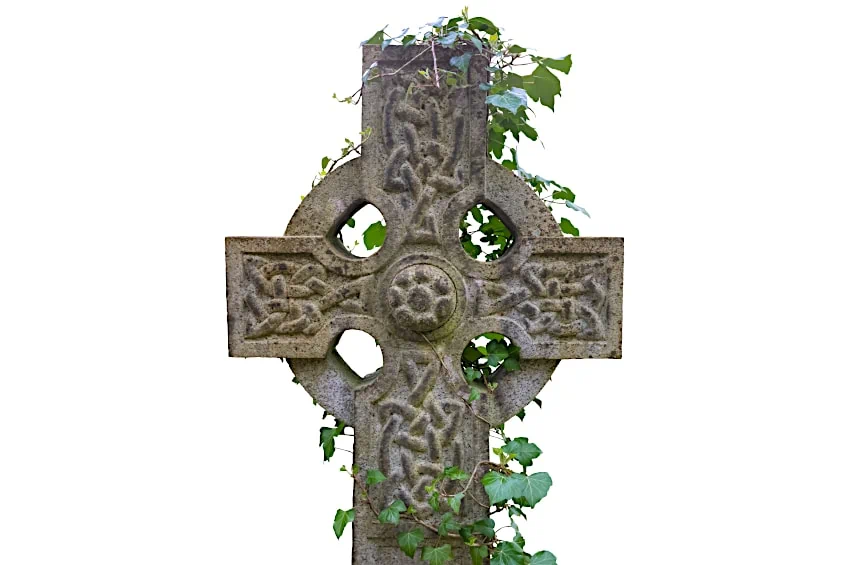 Celtic knots on a stone cross
Celtic knots on a stone cross
The Triquetra Knot
Popular media on many occasions, such as on the TV show Charmed, and even on the side of Thor’s hammer in the popular movie franchise from Marvel Studios. The Design appears to be three interlinking ovular shapes, which jut out at three points.
There is no break in the lines of these shapes, as is characteristic of the Celtic knot design. One of the ovals points upward, the other to the bottom left, and the other to the bottom right. The overall design can be inverted, but the overall aesthetic and meaning remain the same. This being said, what exactly does this three-sided Celtic knot mean?
Meaning of the Triquetra
The Triquetra is a three-sided design, so it makes sense that it would have meanings that encompass this characteristic. There are various interpretations of this design but the most widely acknowledged ones are that of life, death, and rebirth (again, like the ouroboros). The other is of the three elements, earth, wind, and fire, which makes sense considering the fundamental nature of these aspects of life.
The last is that of earth, sea, and sky, again fundamental aspects of the human experience. There is another, more abstract concept associated with the triquetra symbol, which is of past, present, and future. At the end of the day, many three-factor concepts can be assigned to this symbol, and at a certain point in time even the Christian concepts of “father, son, and holy spirit” were associated with it.
The Celtic Spiral Knot
The Celtic spiral knot is one of the most widely used of all Celtic knot designs that have been used throughout history. These symbols have appeared on monasteries and churches throughout the United Kingdom, and have even appeared in various mythologies and literary works since its initial inception.
This design is somewhat unique and mesmerizing in appearance. Also known as the Triskelion, it is characterized by three spirals, all created of one continuous line. These three spirals are joined in the middle creating a negative space in the form of a small triangle. The inner tips of the spirals end at a point, so there aren’t quite as “endless” as some of the other examples of Celtic knot design.
Meaning of the Celtic Spiral Knot
As with most variations of the Celtic knot, the design is associated with the concept of both internal and grand continuity. As one of the oldest iterations of the design, it is primarily associated with the concept of eternal life and prosperity, which makes sense considering it was often attached to places of worship and importance.
Other concepts associated with this design are that of unity and one’s journey of continuous growth throughout life. The gaps between the spirals and the negative space produced by its impression can be interpreted as lie, death, and rebirth, all concepts which are commonly associated with Celtic culture and the human experience as a whole.
The Sailor’s Celtic Knot
The sailor’s Celtic knot is the easiest to create of the types of Celtic knots. This being said, it is also one of the most widely used variations of the types of Celtic knots, not only in the modern-day but all the way back to its inception too. Its simplistic design creates the illusion of intricacy, making it a rather attractive design both conceptually and visually.
The leading theory as to how these knots came about is that they were (unsurprisingly) created by sailors who used them as keepsakes. The knot is believed to represent an eternal bond, not only between the sailors, but the friends and family they left behind on their long voyages out at sea. The knot is characterized by two endless lines intertwined with one another.
Meaning of the Sailor’s Celtic Knot
Symbolism is an extremely powerful psychological concept that can wield immense power over both the mind and body. Going out to sea can be a harrowing and humbling experience, after all, you’re exposed to the ravages of the open ocean with little to no direction, protection, or peace of mind that you’ll return home safely.
For the sailors who created these knots, they served as a reminder of exactly what they were out there for. As a result, the use of this knot is meant to symbolize a promise, perseverance, and remembrance of purpose. These knots are pretty easy to make too and make for a great gift for those you care about.
The Dara Celtic Knot
The Dara Celtic knot is one of the newest iterations of the ancient symbol. This symbol can be found, much like the triquetra, in many forms of modern media and in the form of tattoos. It differs from the overall shape of other Celtic knots, this one doesn’t have a linear or angular shape to it, making it easily distinguishable from other Celtic knot forms.
The shape consists of the concentric line that all like one another, but never break. Like all of the Celtic knot symbols before this, it is designed to represent concepts that are eternal or never-ending in nature. Again, the lines create the illusion of intricacy, when in actuality the design of this knot is actually quite simple and fairly easy to create, at least with a pen and paper.
Meaning of the Dara Celtic Knot
The word Dara is a translation of the Irish word dior which means “oak tree” in the native language. In Irish culture, the oak tree is seen as a species of importance. It is believed to connect the living world with that of the ancestors, and as a result, this symbol was created to illustrate this concept. This is actually part of a greater belief.
Not only does this serve as a symbol for eternity, but it also stands to symbolize the strength of individuality and the path that all of the users follow from the day are born. It is believed that where we come from and the actions of our forefathers influence the path that we take in life, just as the position of a new tree is determined by where its parent tree had grown and deposited its seeds.
The Celtic Love Knot
Considering that the Celtic knot is generally considered to be a symbol of unity, it should come as a surprise that there is a variation of this symbol that symbolizes the bond between lovers. The Celtic love knot has been used for generations to symbolize the love between two people and is often used as a “promise ring” between young lovers.
This knot is best characterized as being two knots that have interlinked with no apparent end. Additionally, these knots can be connected to a ring or diamond-shaped structure depending on the application. The Celtic love knots are relatively easy to make, although it can be tricky to integrate the overall shape into an existing design.
Meaning of the Celtic Love Knot
As we mentioned previously this Celtic knot has been used for a long time to represent the love and overall bond between two people. Unlike some other variations of the knot, the lines are packed closely together, creating a feeling of intensity and dedication in the viewer. This is likely intentional as these are usually used to express closeness and companionship.
Even though jewelry of varying sizes and shapes can be found with this symbol attached to them, they are often of poor quality and a lazy attempt at a cash grab. However, there are high-end pieces that are created for particularly special occasions like weddings and engagement rings. As you can imagine, these are marginally more expensive that the ones you’d find elsewhere.
The Celtic Cross Knot
The Celtic cross is by far one of the most iconic pieces of Gaelic art that can be found both in and around Ireland. They are most commonly found in graveyards as a tribute to people long past and have a great historic and cultural connection to the people of the region. These crosses can be quite large in size, or small enough to fit on a pendant or necklace.
These crosses hail all the way back to the 9th century, and have evolved in intricacy, color, and where they are used. Essentially, they are a cross with the infinite knot pattern inscribed/embossed on the vertical or lateral lines. During the course of its evolution, a ring was added that links with the four points of the cross close to its center. This is believed to have been done to add support and a little bit of flair to the overall design.
Meaning of the Celtic Cross knot
As you probably understand by now, the indigenous Celtic culture and religion merged with Christianity sometime in the distant past. There are many similarities between the two faiths, and as a result, there are loads of examples of Christian and Celtic iconography being merged together to form something greater than the sum of their parts. The Celtic cross knot is a great example of this because of the very clear merging of the Christian cross and the Celtic circle.
Many believe that while the cross itself represents life, death, and rebirth, the circle is meant to represent eternity or a never-ending cycle. Both symbolisms complement one another, so it makes a lot of sense that they would eventually be joined.
The Celtic Shield Knot
The Celtic knotwork shield design is yet another popular symbol that has been used in not only Celtic culture but all over the world. It isn’t uncommon to see this symbol used as a tattoo or sticker, which makes sense considering how effective and cool the overall design is. There are many variations of this type of Celtic knot, but most of them tend to have a four-cornered design with a solid circle surrounding them.
The symbolism of the shield has been used throughout history by virtually every culture to embody the spirit of protection or the unity of a community in the face of the great danger of challenges. After all, most large families from both the United Kingdom and Europe have a family crest or coat of arms designed to evoke pride and unity in the family name.
Meaning of the Celtic Shield Knot
In a time before caveolar body armor and ballistic vests, the best way to defend yourself against an attacker with a sword, mace, or bow and arrow, was a sturdy shield. As a result, the shield became an overall symbol or protection that would be used as a “ward” against bad spirits, and those with intentions to bring harm to you and/or your family.
The Celtic shield knot is believed to do exactly this. During times of war, this symbol would be placed nearby to grant protection against those fighting to protect or take territory. This symbol would also be placed near the sickly to ensure that bad spirits were warded off during the recovery process, a practice that is still common in some circles today.
The Cross of King Solomon
Popular for a long, long time, and a staple in the decorative arts of multiple cultures, this symbol, like the Celtic cross, merges aspects of both indigenous Celtic culture and the emerging popularity of Christianity in the region. If this symbol seems foreign to you, it’s because it hasn’t been translated into popular media due to its obscurity.
The symbolism and overall design of this piece are pretty straightforward. Two overlapping and interlinking ovals are laid out in the shape of a cross, but notably, the vertical column is not extended as is done with the traditional Christian crucifix. Instead, all sides of the cross are equilateral, making it fairly unique for the time period.
Meaning of the Cross of King Solomon
King Solomon’s cross is one of the oldest symbols of the Christian faith and considering how long ago he is believed to have lived this makes complete sense. This cross is one of the few symbolisms of this era that has not been adapted into modern media, but the overall meaning of this design is the link between humanity and the divine.
The King himself was considered to be close to God and is noted to have received visions from angels. This made his symbol quite popular, and he eventually became quite the celebrity of faith, appearing at churches and synagogues. His cross (as it is with all Celtic knotwork designs) has no beginning or end symbolizing eternity and life.
What is the Meaning of the Celtic Knot?
It is widely believed that the Celtic knot can take on any meaning you attach to it, but there are some core symbolisms attached to the overall design of the knot that you should know about. The original design was created back in the Middle Ages and can be found in the sacred texts of monks from the era.
The common denominator between all the variations of the knot is the theme of continuity. They believed that the soul had no beginning or end and that one’s essence would forever exist in one form or the other. This is the primary theme of the Celtic knot design that has been passed down for generations and eventually interwoven with Christianity.
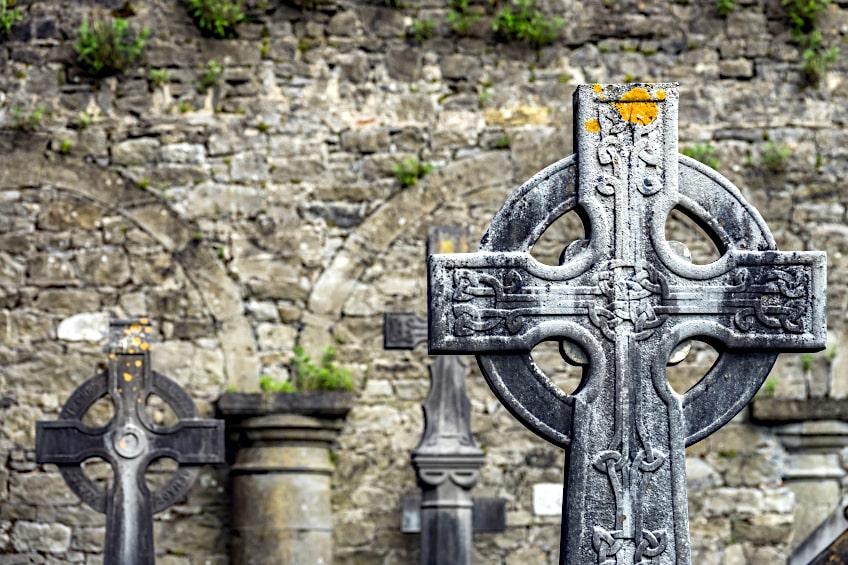 Celtic knotwork on Christian grave markers
Celtic knotwork on Christian grave markers
The origin of the Celtic knot design finds its roots in paganism. Pagan devotees believed in the never-ending cycle of life i.e., birth, life, and death on a continuous loop. This coincided with the Christian belief in the eternal soul, which is partially why their beliefs were integrated into the overall culture and spirit of Christianity later on.
As you’ve undoubtedly seen above, the Celtic knot design has three primary variations that are used today. These variations are based on the sun signs and follow a pattern of three to four points. Knot designs with three points are known as triquetra, whereas knot designs with four points are known as quaternary designs.
The numbers three and four are considered to be sacred in Celtic culture. The number three is considered to represent the trinity of being, whereas the number four is believed to be associated with the four primary elements. This being said, the meanings of the knots can vary considerably depending on the application they’re used in.
Even before recorded history, these symbols can be found all over the native region of the Celtic culture on walls and stone artifacts. Knotted spirals are meant to represent the journey that life takes you on, while double spirals that move in a clockwise position are meant to represent the sun and the equinox.
What Does the Celtic Knot Mean in Modern Times?
The Celtic knot meaning has changed throughout the years. It is the nature of humanity to evolve and seek deeper or completely different meanings of symbols of times long past. After all, before Adolf Hitler came to power the symbol now known as the Swastika was simply a representation of the sun and power. Before pirates used the skull and crossbones symbol to communicate no questers would be taken, it was simply a collection of decidedly random bones.
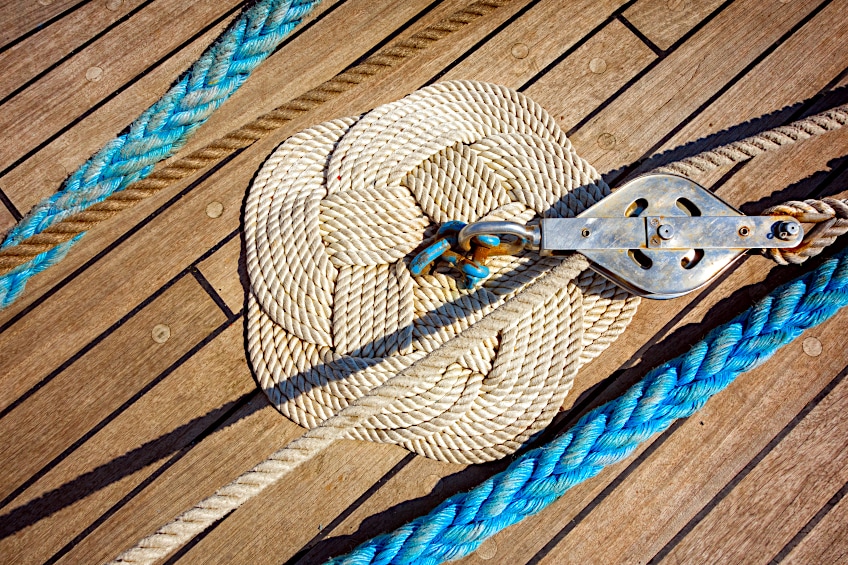 Rope on the deck of a yacht arranged in knotwork pattern
Rope on the deck of a yacht arranged in knotwork pattern
The point here is that meanings change, and even the meaning behind the rather popular Celtic knot has changed. Celtic knot meanings used to range from protection to a representation of the importance of the four elements, but these days people use them as a symbol of general protection, or simply because they look cool as a tattoo.
As we mentioned previously the Celtic knot has been shown in modern media such as on the hammer of Thor in the Avengers series, and on old TV shows like charmed. The former’s presence is to symbolize Thor’s connection to Norse mythology, while the latter is meant to symbolize the bond between the three sisters, hence the triquetra.
The Celtic shield was used as a marker of protection for those going to battle with enemies from foreign lands, whereas these days it is attached to jewelry to symbolize overall protection from negative energy and/or events. This isn’t too different, but the slight distinction in the application is worth noting.
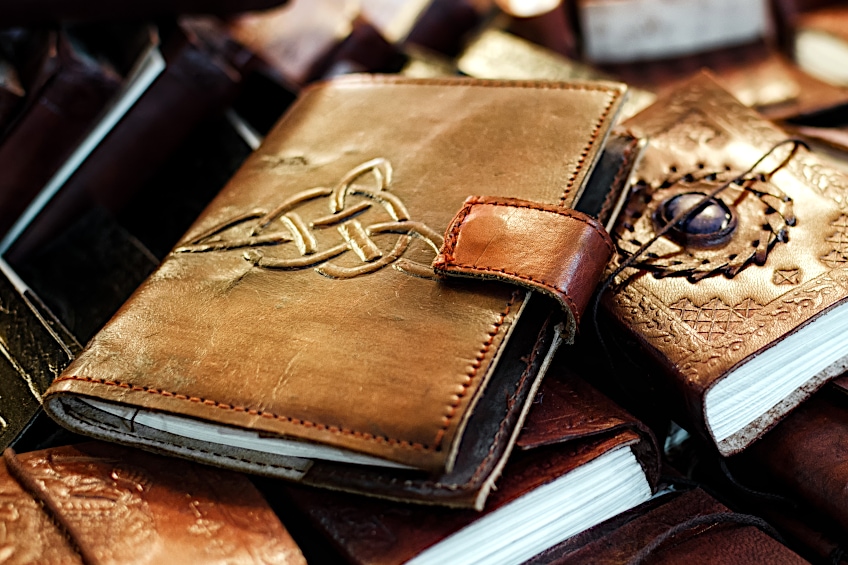 Modern leather book binding embossed with a triquetra
Modern leather book binding embossed with a triquetra
The sailor’s Celtic knot is rarely used at all these days but can be found in crafting circles. Back when it was first invented, the symbol was considered to be a sacred keepsake for those who would be risking their lives at sea. These days it means it’s a lot more light-hearted, illustrating the bond between friends and family members instead.
Some symbolisms have remained the same though. The Celtic heart knot is still considered to represent the bond between lovers, and the cross of King Solomon is still considered to symbolize a binding between the mortal and the divine. As time marches on, these meanings might change again, but it does illustrate that the symbol isn’t quite as important as the meanings attached to them.
Where Can the Celtic Knot Be Found Today?
The Celtic cross is one of the most iconic representations of Gaelic, and by extension, native Irish culture. Despite the tension between Northern and Southern Ireland, these crosses can be found across the borders of both regions, both as grave markers and places like churches and literary texts throughout their history.
Just how many Celtic crosses can be found in Ireland at large though? Well, according to recent figures there are around 60 (complete) Irish crosses that can be found in and around Ireland. It goes without saying that all of these contain the Celtic knot, many of which differ in style and shape depending on the time in which they were constructed.
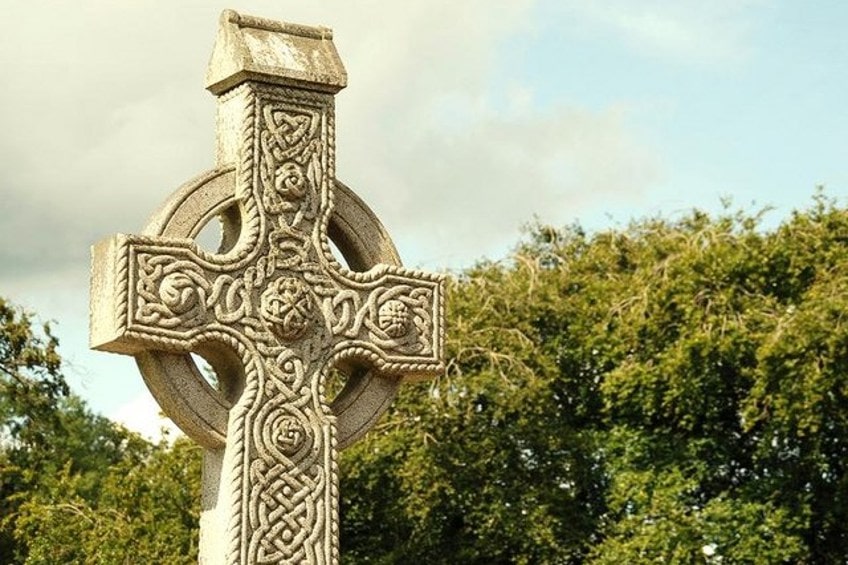 Head of a stone Celtic cross in St Patrick’s Church of Ireland’s parish churchyard, Waringstown, County Down; Albert Bridge / Donaghacloney (CoI) parish church, Waringstown (4)
Head of a stone Celtic cross in St Patrick’s Church of Ireland’s parish churchyard, Waringstown, County Down; Albert Bridge / Donaghacloney (CoI) parish church, Waringstown (4)
The Celtic knot at large can be found essentially anywhere you go in the region. Due to the history of Ireland, there are loads of ruins that can be found with the Celtic knot engraved into their surfaces. In fact, there are cave walls that have variations of the Celtic knot either engraved or drawn onto them, highlighting just how long the symbol has been a part of Gaelic culture.
Earlier we mentioned that the Celtic Knot was used as a symbol of protection from both physical and spiritual threats. As a result, there are historic buildings in Ireland that have this symbol integrated into their architecture. These can be found all over the region as well and are likely a result of the influence the design of churches had on the overall architectural style at the time.
Can Celtic knots be found outside of Ireland though? Well, as we mentioned previously this design had a number of influences from all over the world. As a result, you can find the pattern of interlocking lines all over the world, including in Italy and Germany in some instances. Whether these are considered to be “Celtic” knots and not simply pagan imagery is up for debate.
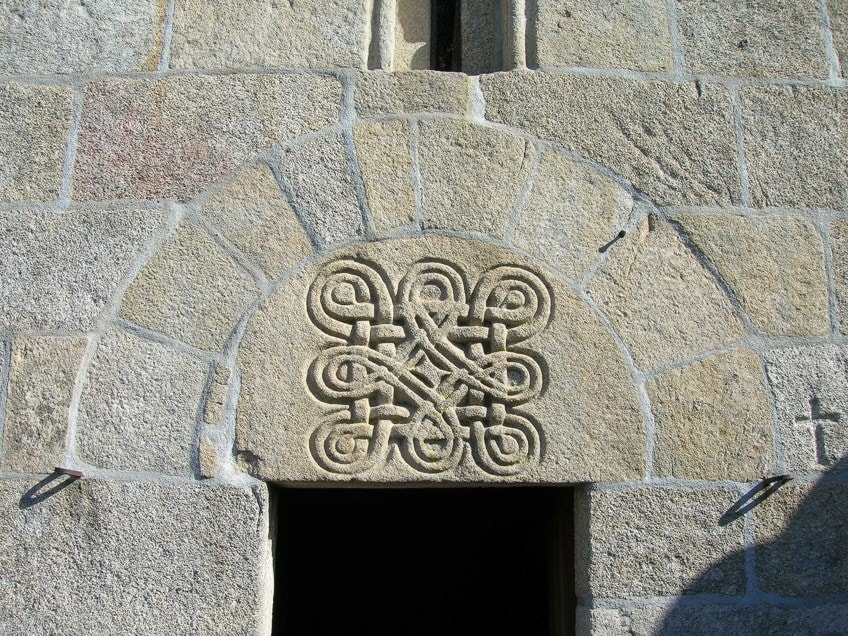 A Celtic cross above the southern portal of the Church of Santa María de Zos in Trasmiras, Galicia, Spain; José Antonio Gil Martínez, CC BY 2.0, via Wikimedia Commons
A Celtic cross above the southern portal of the Church of Santa María de Zos in Trasmiras, Galicia, Spain; José Antonio Gil Martínez, CC BY 2.0, via Wikimedia Commons
Overall, the concept of unity is something that is universal to the human experience. After all, we live together, fight together, sleep together, eat together, struggle together, and inevitably die together. As a result, there have been various symbols throughout history such as the African symbol of Ubuntu, the ouroboros, and the English Tudor rose, which embodies the same meaning.
The Celtic knot is simply one of the more popular symbols associated with this concept. Togetherness is not a new idea, and even in an age where we don’t need to cuddle around a fire for warmth or defend our village from invaders (at least in “first world” countries) these symbols still carry with them the gravity of what it means to be safe, and at one with your fellow people and the world around us.
Now that you know what the Celtic cross is, where it comes from, the different types of Celtic crosses you could come across, what each of them means, and where you can find Celtic crosses throughout the world, it’s time for you to get out there and put your newfound knowledge to the test. Remember to always ensure that you know what a symbol means before displaying it on your person or in any given space and that you have the correct symbol for your intended application at all times.
Frequently Asked Questions
What Is the History of the Celtic Knot?
Well, the Celtic knot is a result of the influence of many cultures. The final design is attributed to the pagan culture in Ireland at the time, which soon became intertwined with early Christian artwork, resulting in the Celtic knot imagery we all know today.
How Old Is the Celtic Knot?
Based on the history of the Celtic knot in various regions of Ireland, can be traced back to the third and fourth centuries CE. There is evidence of predecessors of the symbol we know and love today dating back even further, and they can be found all over the world.
Is the Celtic Knot a Pagan Symbol?
Yes and no. The original Celtic knot finds its roots in paganism, as Christian and pagan cultures in the region of Ireland joined together the Celtic knot was integrated into cultural/religious iconography due to what it symbolizes.

I am deeply passionate about history and am constantly fascinated by the rich and complex stories of the past. As the editor-in-chief of learning-history.com, I have the opportunity to share this passion with a wide audience through the creation and distribution of engaging and informative content about historical events, persons, and cultures. Whether it’s through writing articles and blog posts or creating videos or podcasts, I strive to bring the past to life in a way that is both accurate and enjoyable. My expertise in history, combined with my strong writing and communication skills, allows me to effectively communicate complex historical concepts and make them accessible and interesting to a wide range of readers. I am truly grateful for the opportunity to share my love of history with others through my work on learning-history.com.

